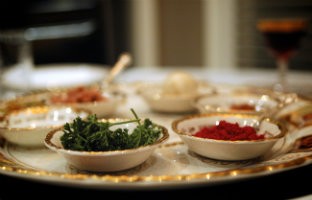Being and doing: What’s in a religious identity?
When Passover comes around, I sometimes remark to friends that I must be the only Christian in the world who participates in three or four seders a year. Even active Jews don’t usually attend that many. Why would they, after all, unless they’re leading them, as my wife, a rabbi, often does. I am usually sitting beside her. I am there looking after our toddler, but also as something of a rebbetzman.
Rebbetzin is the name often given to the rabbi’s wife in traditional Jewish communities. It is a transliterated Yiddish word roughly equivalent to “rebbe’s female,” like “pastor’s wife” in some Christian traditions. In progressive communities like ours, rebbetzman is used as a tongue-in-cheek equivalent to describe guys like me. Not that most rebbetzmen are goys; they certainly aren’t.
When I’m at a seder or shul, however, I am gathering together with my primary congregation—even though I’m not Jewish. I attend not only because I am a rebbetzman but because I find it meaningful. Many religious traditions mark God’s activity in the world as something akin to freeing slaves, and Judaism does this memorably.





